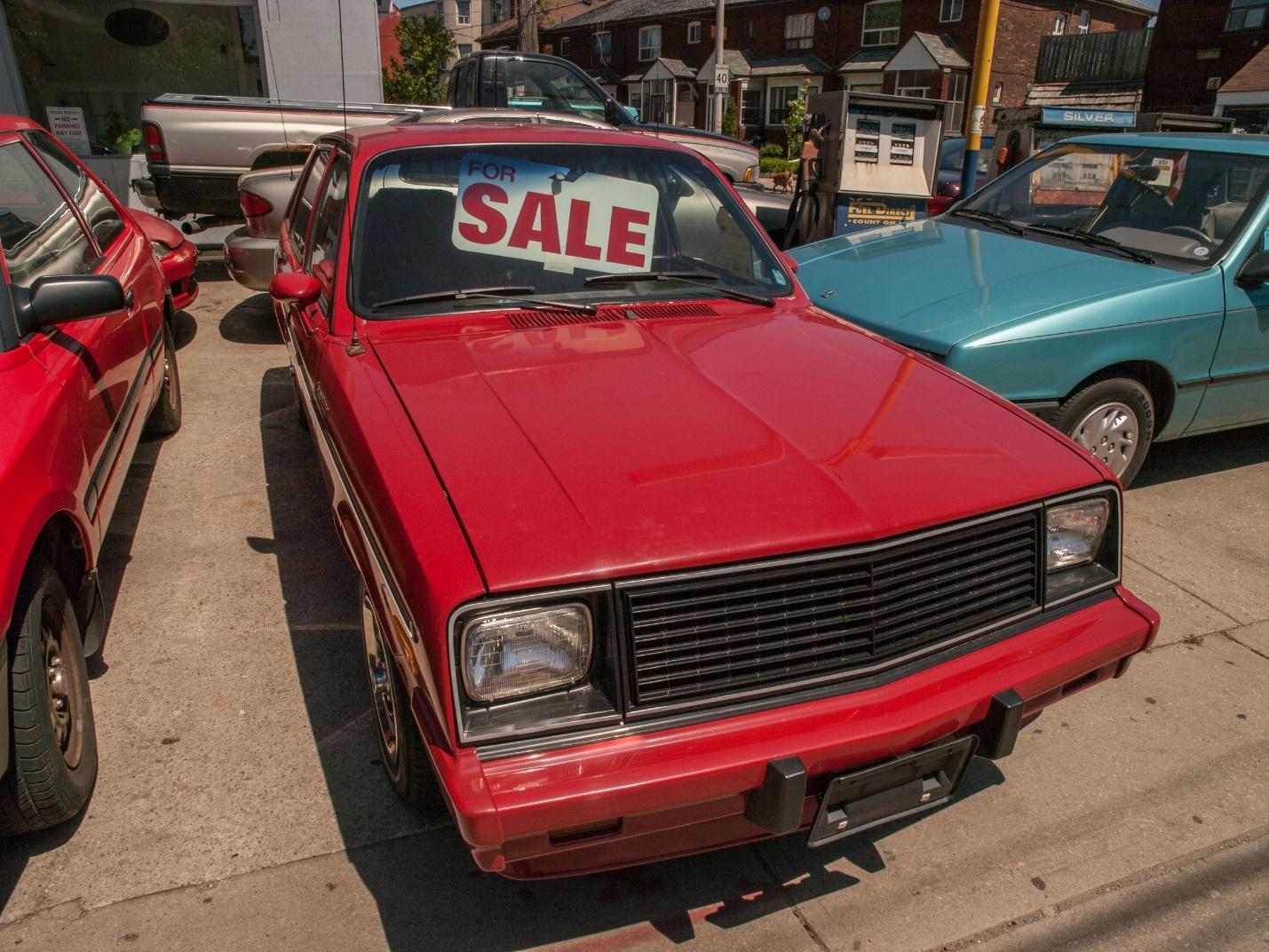6 Red Flags to Watch for When Buying a Car
Hunting down a shiny, new set of wheels can feel tremendously exciting—and equally scary! Buying a car isn’t like buying clothes that you outgrow over time; it’s an investment, and an investment that will stick with you for quite a while. You want to make sure that your new baby will be able to get you safely from point A to point B and as reliably on mile one as mile 5,000. There’s nothing worse than driving a car off the lot only to find out that it’s a lemon by the time you get around the corner.

So what are the red flags you should watch out for when buying a car? Keep your radar on the lookout for these common occurrences and you’ll be able to shop with much more confidence during your next car-buying experience.
1. Red Flag: A Dirty Title or Complicated History
You’ve probably heard the phrase “Show me the Carfax” more than once. And while a clean Carfax report is a step in the right direction, you need to be mindful of the many CARFAUX reports that elide some details of the vehicle’s history; just because a seller presents you with the car’s documented history, does not mean that the report is necessarily accurate or comprehensive.
For a small fee, the National Motor Vehicle Title Information System will produce a vehicle’s title, odometer data, and damage history. Do your diligence and cross-check that report with the one provided to you by the seller to make sure the information is consistent.
For instance, say you’re looking at a vehicle that was acquired by an insurance company and sold at an auction to a salvage company. It’s now back on the market with lower miles and a clean title, meaning it’s a pretty safe bet that the vehicle probably had the odometer turned back and the title washed by an unscrupulous company—which is definitely a situation you’ll want to avoid.
Note: Above all else, if the title of a car you’re interested in says “Salvage”, do not go near it with a 10 foot pole!
2. Red Flag: Mismatched Paint
Just because a car was in an accident, doesn’t mean that the accident was reported. Plenty of car owners try to keep insurance company out of incidents in order to keep monthly premiums at a low. Instead, they’ll pay a victims’ mechanic directly out of pocket and complete their own car repairs at home in the garage.
Keep an eye out for uneven paint, mismatched tail lights, and other ways damage might have been camouflaged. If you see any duct tape holding something together, definitely run in the opposite direction!

3. Red Flag: Excessive Rust
You don’t need to live by the beach to experience car erosion. Whether you’re buying a new Audi for sale in Peoria or a used SUV in Detroit, Mother Nature still has the power to corrode your shiny set of wheels. Although it’s expensive and time consuming, you can technically replace rusted out body panels—but if there’s excessive rust on the actual frame of the car, stay away. The frame is the very bedrock of the car; replacing it is not only ridiculously expensive, but it also weakens the overall infrastructure. Remember, always prioritize safety over a sweet deal!
4. Red Flag: Young Car, Multiple Owners
When you look at a car’s title and see multiple owners spanning the car’s young life on the road, you should pause for concern. When a car owner attempts to resell their new vehicle to another person shortly after purchase, it seems a little fishy. When the same thing happens again and again, it indicates that there’s definitely something wrong with the car—even if that “something” doesn’t show up on its maintenance report. Maybe it’s an irregular electrical short that causes your sound system to go in and out, or maybe it’s just an unlucky magnet for speeding tickets. Whatever it may be, learn from the long list of owners before you who realized their mistake!
5. Red Flag: Warning Lights
Warning lights ought to be a quick tip-off that the vehicle has a few clandestine left to be told.
If a warning light illuminates on the dashboard, don't overlook it. Treat and examine it immediately as a red flag. Freely speaking, a red light means impedingly serious nuisance. Try not to drive the vehicle. Orange represents alert and shows something is requiring critical consideration. Green is a reminder, not an issue.
We've all driven around possibly for a couple of weeks with the check engine light on in our vehicle. All things considered, if the vehicle is running, it's not entirely obvious to see a light on the dashboard. What's more, at times, those lights do come on as a result of an awful sensor or because we didn't tighten the gas cap properly.
In any case, if you're hoping to purchase a trade-in vehicle that has a dashboard that resembles a Christmas tree, it is sufficient of a red flag that you must reflect on.
6.Red Flag: A Very Low Price
You're likely thinking about how a low cost can be a red flag. Expectedly, A low price is a killer deal. While possibly, once in a blue moon, somebody finds a high caliber utilized vehicle without any issues at a ridiculously low value, the chances of that experience are pretty gosh-awful low.
As a rule, an overly low cost on a trade-in vehicle demonstrates that the vender needs to rid of it rapidly and is hoping that the vision of the dollars you'll be pondering sparing is sufficient to dazzle you to different issues the vehicle has. Except if you're willing to contribute your funds on repairs — perhaps expensive ones — on the new-to-you car, avoid utilized cars with costs that are much lower than comparative models.
Get a pre-purchase car inspection, take it for a test drive on and off the freeways, and pour over the car’s title. If it checks every box, negotiate the price then pull the trigger on your new wheels!
